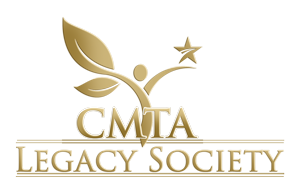The CMTA’s STAR (Strategy to Accelerate Research)
The CMTA’s vision is a world where patients with CMT neuropathies have therapies available to them to manage or modify their disease. That vision is poised to become reality as STAR pushes the Charcot-Marie-Tooth research forward at an ever-increasing speed.
One of the first ways that the CMTA accelerates CMT research is by capitalizing on advances in scientific knowledge and technology. Those advances, which spurred the CMTA to launch the Strategy to Accelerate Research in 2008, allow the identification of the genes that cause CMT, permit the replication of the genetic mutations in cellular and animal models, and utilize rapid drug discovery and preclinical technologies to identify therapies that modify the CMT disease process.
One of the most important ways the CMTA accelerates the Charcot-Marie-Tooth disease (CMT) research process is by putting together teams of top scientists recruited from an international body of scientific and clinical Key Opinion Leaders in CMT. The STAR program’s unique character stems from the willingness of the scientists to come together to advance CMT research collaboratively, sharing and communicating ideas, discoveries and research findings.
The CMTA’s funding and operations focus is on translational research that will lead as directly as possible to therapeutic treatments of CMT. To further this goal, the CMTA has put in place a STAR Advisory Board that includes both a Scientific Expert Board and a Therapy Expert Board.
Another critical acceleration strategy is the formation of alliances with members of the pharmaceutical and biotechnology industries, service companies, non-profits and government. These STAR consortium members complement a network of sponsored University laboratories and position STAR to deliver therapies to the market in the near future for its patient population. View our STAR alliance partners.
Still another way the CMTA accelerates the research is by founding and funding patient-centric, multi-disciplinary CMT clinics, staffed by some of the highest quality CMT clinicians and researchers in the world. Through these CMTA Centers of Excellence, children, adults and families affected by CMT can be assured of receiving comprehensive care by a team of CMT experts. Just as importantly, by visiting a CMTA Center of Excellence, CMTers can participate in research projects that the NIH Inherited Neuropathies Consortium is conducting at the Centers of Excellence with CMTA sponsorship.
Together, the STAR Advisory Board, STAR investigators, and the CMTA’s pharmaceutical, foundation, government and service partners form a comprehensive STAR Consortium that is able to move CMT research ideas from lab bench to bedside.
The proposal review process supports the CMTA’s Disease Project Team organization, in which cross-functional research teams are assembled to focus on a specific CMT disease. (Current CMTA teams are focused on all subtypes, including unknown variants, with a special emphasis on the more prevalent types – CMT1A, CMT2A, CMT2E, CMT1X, CMT1B and CMT4.) Advanced team efforts take place in consortia involving multiple partners with expertise in assay development, high-throughput screening, animal model development, pharmacology, medicinal chemistry and clinical planning.
STAR’s multipronged efforts are paying off on a number of different fronts. (For more details, see Translational Advances).





